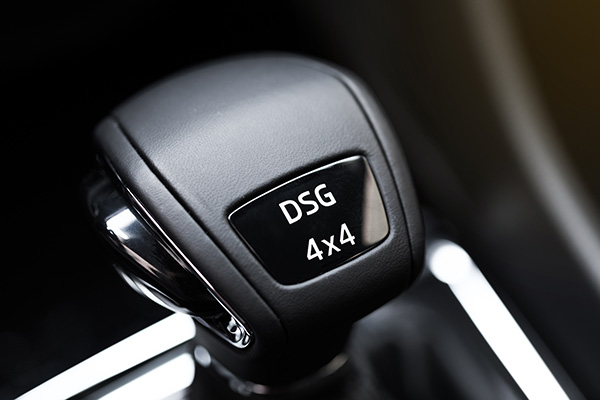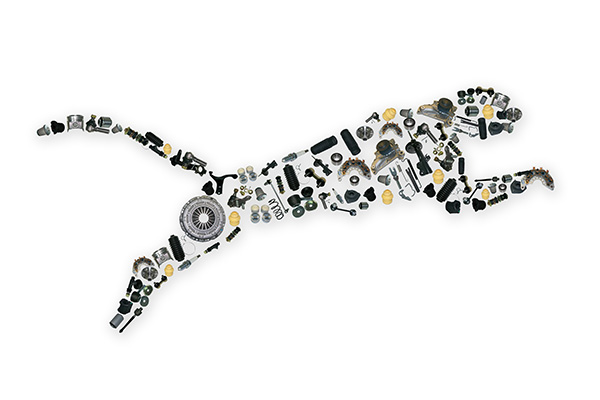Posted on 12/19/2025

If you have driven a Volkswagen with a DSG transmission, you have probably noticed that it shifts quickly and feels more direct than a typical automatic. The engine stays in power, the shifts are snappy, and the car responds almost like a manual without a clutch pedal. That feeling is not a coincidence. The DSG is built differently inside, and those design choices change how it behaves on the road. What Is a DSG Transmission and How It Works in Volkswagens DSG stands for Direct Shift Gearbox. Instead of a torque converter and a single set of clutches, a DSG uses two separate clutches and two gear sets inside one housing. One clutch handles the odd gears, the other handles the even gears. While you are driving in one gear, the next gear is already preselected on the other shaft. When it is time to shift, the transmission simply releases one clutch and applies the other. Power delivery is handed off rather than interrupted. That is why shifts feel so quick and contro ... read more
Posted on 11/28/2025

Hyundai builds practical, reliable cars, but all makes develop patterns over time. If your Hyundai shows one of these familiar symptoms, a timely repair prevents bigger bills and keeps daily driving calm and predictable. Here are seven issues owners report most often, what they feel like on the road, and how a technician usually fixes them. 1) Check Engine Light, Rough Idle, or Hesitation: Coils and Plugs A flashing or steady check engine light paired with a shaky idle often points to an ignition misfire. Worn spark plugs, aging coil packs, or a cracked coil boot can cause a single-cylinder misfire that feels like a stumble at stoplights and a surge on hills. A scan typically shows a P030X code tied to a cylinder. The solution is straightforward: fresh plugs at the correct gap and any weak coils replaced as a set if mileage is high. Keeping the air filter clean and fixing small vacuum leaks helps the repa ... read more
Posted on 10/31/2025

Jaguars are known for their smooth performance, refined handling, and powerful engines. But even high-end vehicles like these can develop problems over time. If your Jaguar isn’t feeling as responsive as usual, or if strange noises or warning lights start showing up, it might be time to give the engine some attention. Ignoring early symptoms can lead to much larger issues, and in some cases, complete engine failure. Knowing what to watch for can help you catch engine problems early and protect your investment. 1. Knocking or Ticking Sounds from the Engine A healthy Jaguar engine should run quietly, especially at idle. If you begin to hear a knocking or ticking sound that wasn’t there before, it could signal serious internal issues. These noises often come from worn bearings, low oil pressure, or problems with the timing chain or valve train. While some sounds may turn out to be harmless, engine knocking should never be ignored. It’s one of the ear ... read more
Posted on 9/26/2025

Owning a Mercedes-Benz is about more than just driving a luxury vehicle. It’s about enjoying exceptional performance, comfort, and engineering precision every time you get behind the wheel. However, even the most well-built vehicles require consistent care to stay at their best. Routine maintenance not only preserves performance but also protects your investment and prevents unexpected repairs down the road. Here are five essential maintenance tips to keep your Mercedes-Benz running smoothly and performing like the luxury machine it was designed to be. 1. Stick to Scheduled Oil Changes Your Mercedes-Benz engine relies on clean, high-quality oil to stay properly lubricated and protected. Over time, oil collects dirt and carbon deposits that reduce its effectiveness. If it isn’t replaced on schedule, sludge starts to build up, leading to decreased performance and premature wear. Mercedes-Benz vehicles typically require synthetic oil, which performs better ... read more
Posted on 8/29/2025

Land Rover has built a reputation for crafting vehicles that balance rugged off-road capability with refined comfort. Within the lineup, the Range Rover, Defender, and Discovery each serve different purposes. For drivers in Atlanta considering a Land Rover or simply curious about the differences, it's helpful to know what sets these iconic models apart. Each vehicle has its own personality, strengths, and ideal usage. Whether you’re navigating the city, heading to the mountains, or tackling off-road trails, one of these models is likely a better fit than the others. Range Rover: Luxury and Prestige Above All The Range Rover is the flagship of the Land Rover brand. It’s known for offering high-end luxury while still maintaining the off-road prowess that defines the brand. For many, the Range Rover is more about refined travel than rugged adventure. Inside, the Range Rover feels more like a high-end lounge. Premium leather, real wood trim, and advance ... read more